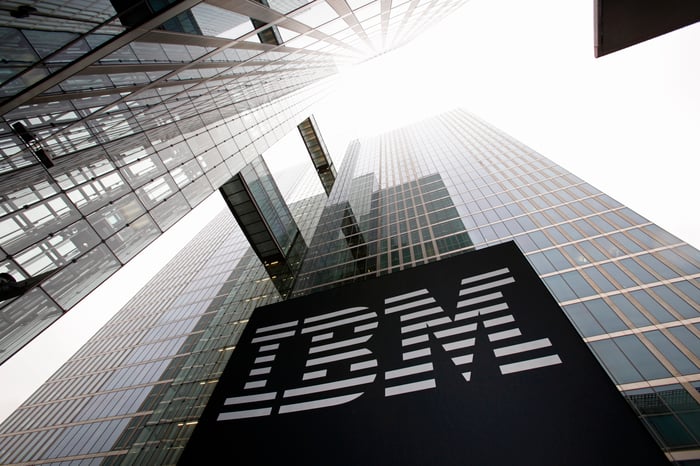International Business Machines (IBM 1.05%) has been setting records this year, but not in a good way. The stock has been tumbling and pessimism has been building up, pushing the dividend yield to historically high levels. IBM's dividend yield hit 4.5% in June, a two-decade high. It's now approaching 6% after the latest sell-off, the highest yield since the company's existential crisis in the 1990s.
As a dividend stock, IBM has certainly become riskier in the wake of the Red Hat acquisition. The $34 billion deal will put a bunch of new debt on the company's balance sheet, making the century-old tech giant more fragile. IBM expects the acquisition to boost free cash flow within a year of closing, which will "support a solid and growing dividend," according to the company's press release announcing the deal. But things can and do go wrong with major acquisitions like this.
IBM's dividend yield is now in telecom territory, and the stock trades at a single-digit multiple to earnings. There are risks, but investors are well compensated for bearing them.

Image source: IBM.
Cheap, and getting cheaper
IBM stock trades for around $110 per share at the time of this writing. That's down nearly 50% from the all-time high reached in 2013. The stock has shed about 30% of its value this year alone, and most of that decline occurred in the past three months.
IBM's quarterly dividend of $1.57 per share works out to a yield of 5.7%. The company expects to produce adjusted earnings of at least $13.80 per share and free cash flow of $12 billion this year. That puts the price-to-earnings ratio at just 8, and the price-to-free cash flow ratio at roughly 8.5.
Those are no-growth, or even negative-growth, multiples. The market is putting the odds of an IBM turnaround at zero.
Inconsistent growth
IBM returned to revenue growth at the end of 2017, driven by a new mainframe and cloud computing growth. But revenue headed lower in the third quarter of this year because of currency effects and weak results from certain legacy businesses. IBM sold off some of those troubled software products earlier this month, scoring $1.8 billion. Revenue will almost certainly decline again in the fourth quarter due to the mainframe product cycle, but that's not a surprise.
The Red Hat deal will strengthen the company's hand in the cloud computing market, particularly hybrid cloud computing. IBM is making a big bet on a hybrid, multi-cloud world. Other companies are starting to come around to that view, which IBM has held for years. Amazon Web Services announced AWS Outposts last month, for example, which allows customers to run workloads on premises (rather than at a remote facility).
IBM's long-term target is to grow revenue at a low-single-digit rate annually while expanding per-share earnings at a high-single-digit rate. It's not there yet, at least not consistently. The market has run out of patience.
The best time to buy a stock is often when no one else wants to. Given the poor stock performance, it's safe to say that few are interested in buying IBM. But that's a mistake. The company is priced for disaster, and the dividend is sustainable, at least barring catastrophe. The dividend accounts for roughly 46% of the company's adjusted earnings guidance, leaving plenty of room for things to go wrong.
With a sky-high dividend yield, a beaten-down valuation, and pessimism at an extreme, it won't take much good news to send IBM stock soaring.





